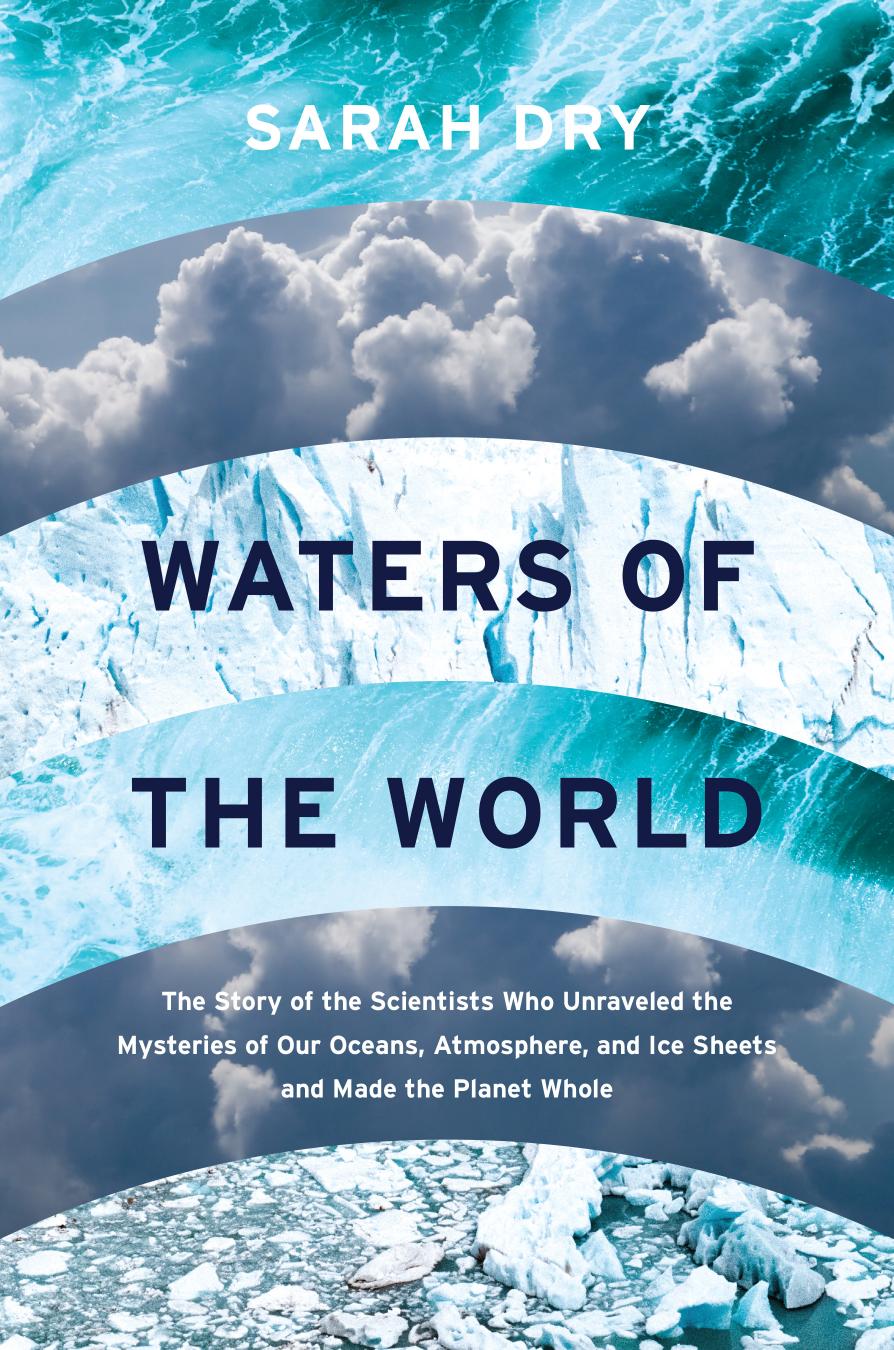Waters of the World by Sarah Dry

Author:Sarah Dry [Dry, Sarah]
Language: eng
Format: epub, pdf
Tags: SCI026000, SCI034000, SCI052000, SCI000000, BIO015000, BIO006000, SCI042000
ISBN: 9781911617334
Publisher: Scribe Publications Pty Ltd
Published: 2019-10-10T04:00:00+00:00
FIG. 5.8. Joanne and Herbert Riehl puzzling over hurricanes, in a cartoon by Margaret LeMone. Note the “real hand-analyzed data” and the big question: “Why are there so few hurricanes?” Credit: Margaret LeMone.
Malkus and Riehl’s first impulse, after publishing this suggestive paper, was to do some more observing. Given the complex relationship between wildly disparate scales, they thought the only way to make further advances would be to “study these widely different scales of motion in their context to each other.” They set out to make the “first attempt, largely descriptive, to relate synoptic and cloud scale phenomena.” With this research program, Malkus was moving a step toward her goal of linking small-scale phenomena, such as clouds, with larger-scale phenomena such as storms, hurricanes, and finally the general circulation of the entire atmosphere. It was an exciting time. The long era during which the cry had always been “we need more observations” seemed to be finally coming to a close, as airplanes and radiosondes began gathering more data in more places than ever before.46 Drawing on the Wyman and Woodcock trade-wind expedition, Stommel’s 1947 entrainment paper, and a series of other papers demonstrating how important the surrounding atmosphere was in the formation of clouds, Malkus and Riehl summarized their findings in a book titled Cloud Structure and Distributions over the Tropical Pacific Ocean. In it, they demonstrated why it was no longer be possible to look at the tropics and see a boring, steady-state atmosphere. Henceforth, the tropics would be seen as a tumultuous place, far more variable than it was stable.47 Rain fell in the tropics far more erratically than anyone had imagined. In regions where the majority of rain fell on just two or three days a month and even annual averages varied significantly, averages were not merely unhelpful but actively misleading.48
* * *
Underlying this optimism, for those who cared to notice, was a groundswell of doubt and uncertainty. It was one thing to have observations and the means to make calculations based upon them, but would “mere” observations ever really be enough to crack the atmospheric code? Physical insights, not just observations, were required to reduce an otherwise potential deluge of data into a usable current. “It is only through the leaven of some purely physical hypothesis,” cautioned Victor Starr, “that we are guided to the appropriate mathematical use of these principles.”49 Where to find that leaven? The most useful tool in the scientific arsenal for reducing complexity was the experiment, a controlled intervention that enabled a researcher to isolate and test aspects of an otherwise overwhelmingly complex problem. Computers had raised the possibility of identifying likely points for experimental intervention. But the ability to perform controlled physical (rather than computer) experiments in which certain variables were held stable while others were manipulated had long eluded atmospheric scientists, partly for the reasons that Victor Starr had underlined. The atmosphere was so big, so unruly, and so “essentially one” that it was almost impossible to render it a pliable experimental subject.
Download
This site does not store any files on its server. We only index and link to content provided by other sites. Please contact the content providers to delete copyright contents if any and email us, we'll remove relevant links or contents immediately.
The Lonely City by Olivia Laing(4136)
Animal Frequency by Melissa Alvarez(3769)
All Creatures Great and Small by James Herriot(3535)
Walking by Henry David Thoreau(3244)
Exit West by Mohsin Hamid(3207)
Origin Story: A Big History of Everything by David Christian(3150)
COSMOS by Carl Sagan(2967)
How to Read Water: Clues and Patterns from Puddles to the Sea (Natural Navigation) by Tristan Gooley(2892)
Hedgerow by John Wright(2790)
The Inner Life of Animals by Peter Wohlleben(2779)
Origin Story by David Christian(2700)
How to Read Nature by Tristan Gooley(2674)
Project Animal Farm: An Accidental Journey into the Secret World of Farming and the Truth About Our Food by Sonia Faruqi(2672)
How to Do Nothing by Jenny Odell(2655)
Water by Ian Miller(2605)
A Forest Journey by John Perlin(2594)
The Plant Messiah by Carlos Magdalena(2465)
A Wilder Time by William E. Glassley(2371)
Forests: A Very Short Introduction by Jaboury Ghazoul(2345)
